A bright flower in the garden is always good. It is impossible to pass by him without looking again and without being amazed at the creation of Mother Nature. But among all there is that beauty who outshines the rest, the true Princess of the garden (after all, the queen's place is taken!). This is a gorgeous and at the same time cute eustoma photo of flowers in the garden which will make every gardener run to the store for seeds! Charming bells of various shades (and even double ones!) On an erect stem cannot but cause admiration. And there are up to 47 of them on one bush!
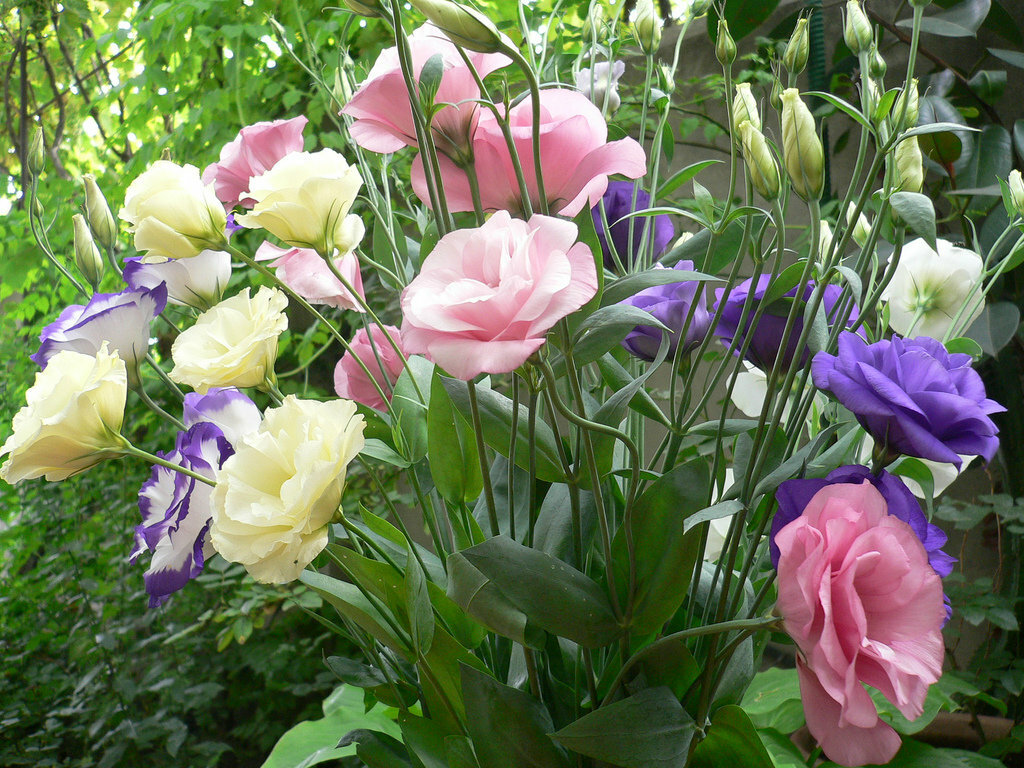
Eustoma began to appear in our gardens just a few years ago, quickly became fashionable and is now found in many suburban areas
Eustoma in landscape design: reasons for adoration
Content
- Eustoma in landscape design: reasons for adoration
- Varieties, hybrids
- The "Texas Bell" varieties or those that never get too many
- Planting and caring for cute bells
- Photo of eustoma in a flowerbed: harmoniously selected flowers-neighbors and an interesting design
- Video: Everything about growing eustoma in your garden
- Photo of beautiful eustoma flowers
Eustoma (lat eustoma) belongs to the Gentian family and has only 3 species. The most beautiful and persistent of them are used in the garden - Russell's eustoma and large-flowered.
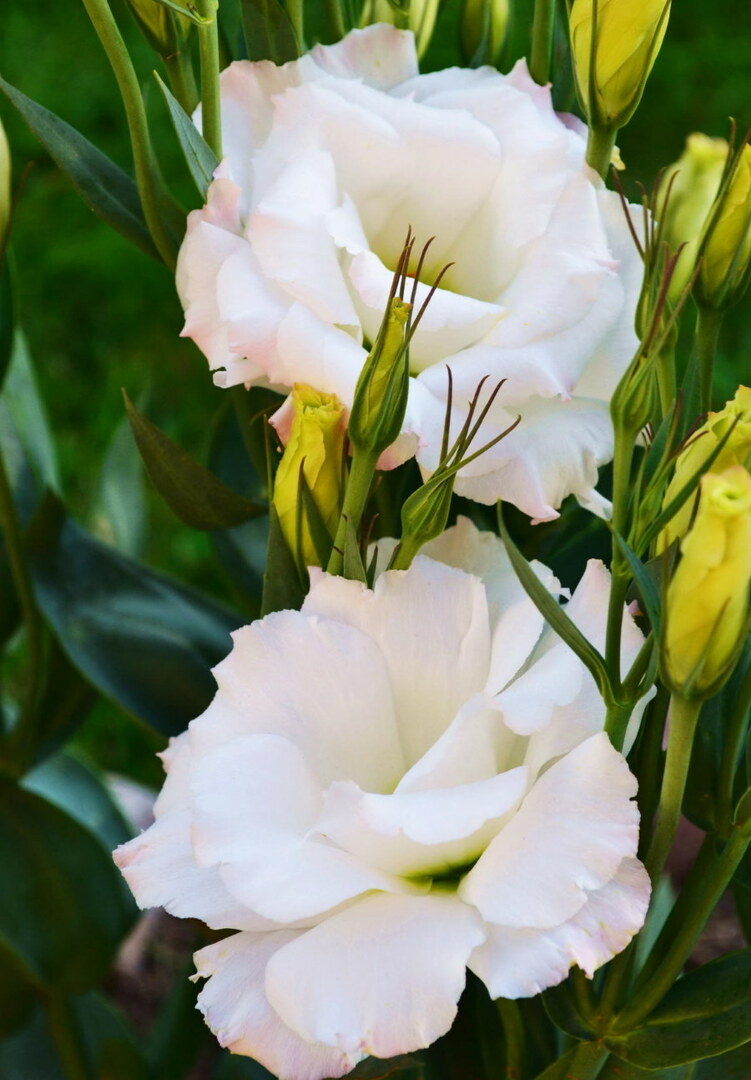
Beautiful buds of eustoma resemble a rose when closed, and when opened, they look like fluffy poppies.
In common people, you can find another name for eustoma - lisianthus, which means "bitter flowers." The homeland of the beauty is the South of America and when the Indians were inhabiting it, they believed that it was a “bitter flower” that insects were afraid of.
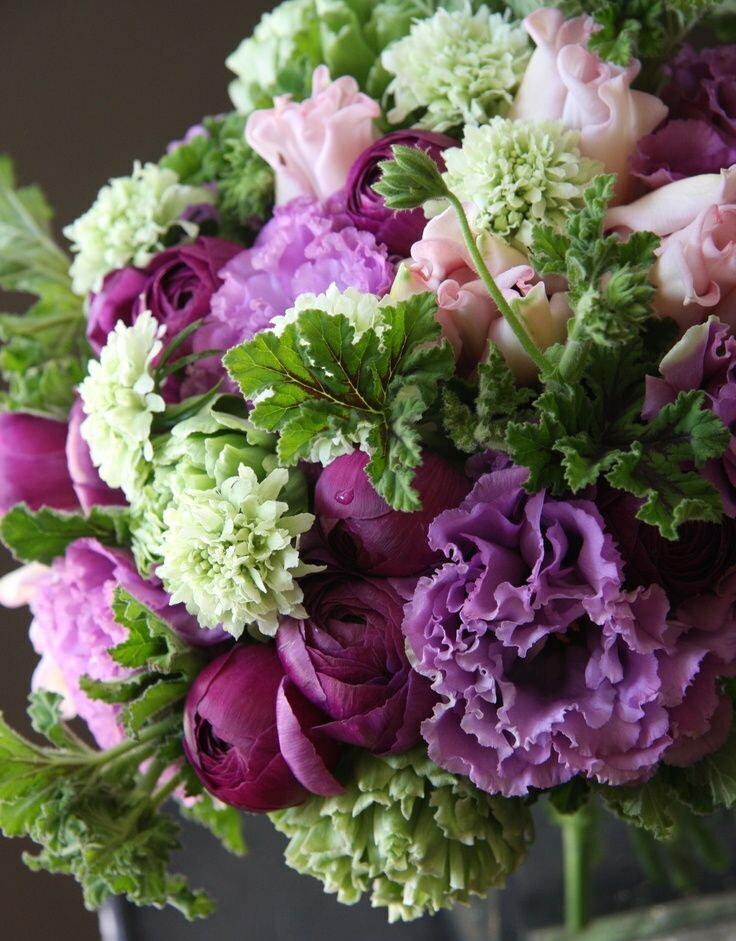
Eustoma is often used to create luxurious bouquets along with other flowers.
Today, the eustoma flower in the flower bed is becoming one of the main ones, and it is around it that the entire flower arrangement can be built. And all because lisianthus:
- It has a considerable height - some varieties reach 110-120 cm and stands out favorably in the garden, becoming a kind of "spot of attention".
- It harmoniously coexists with both annual and perennial crops of different heights.
- It will not be difficult to organize a full-color flower bed with its help.
- Not whimsical to care (this applies to both soil and watering).
Realizing that the flowers in the garden - eustomas - will not be equal, it remains to choose the seeds of large-flowered bells and paint the territory. Do not forget that it is good for cutting, so at any time it will be an excellent addition to the gift!
Varieties, hybrids
Since only 2 types of eustoma are used for selection and cultivation, one must also choose from them. You can give preference to large-flowered eustoma, since Russell's eustoma has smaller bells (most often of the same color!) And has an average height (up to 45 cm), representing a short bush.
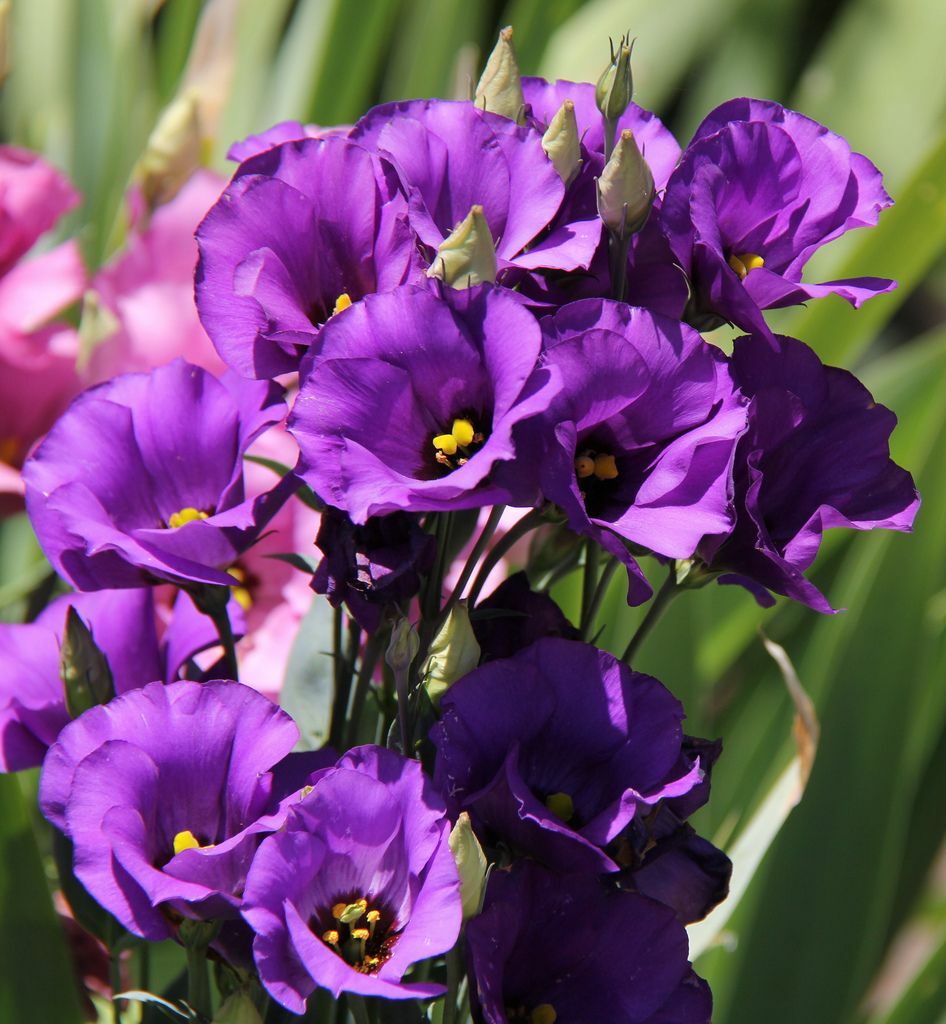
The dwarf variety “Faithfulness” grows by only 15–20 cm
From the varieties, you can choose a tall flower (80-120 cm) or undersized (up to 30 cm). Each of them looks organic, while garden eustoma of different heights can be planted in different areas and perform one or another function.
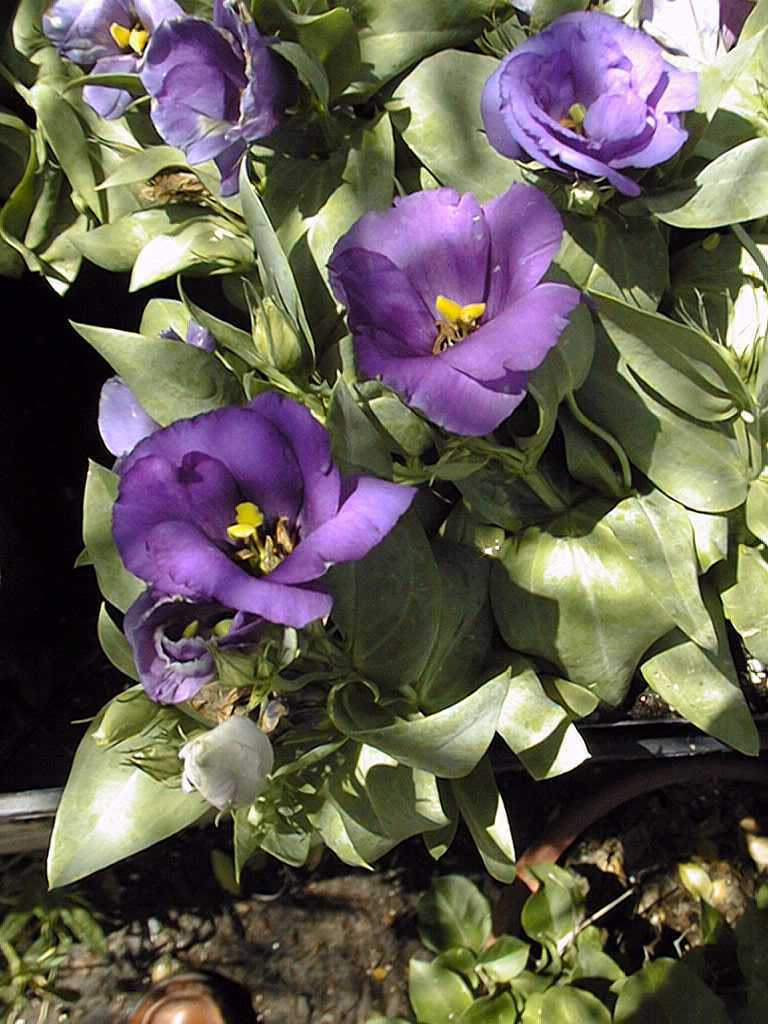
Variety "Flamenco" grows up to 120 cm in height, is distinguished by large buds of a monochromatic or variegated color
Many still do not know for certain which eustoma flower, that is, is it a houseplant or a garden one? Growing tall varieties in the garden, we get a garden one, but undersized varieties can be grown in a pot on a windowsill - and we get a houseplant that pleases the eye.
The "Texas Bell" varieties or those that never get too many
There are countless varieties of garden beauty that can outshine even a rose with its tenderness, romance and natural magic. The breeders have brought out lilac, terracotta, yellow, purple, green bells and continue to work. Therefore, there is a great selection of seeds in the store, you can easily be tempted by several varieties!
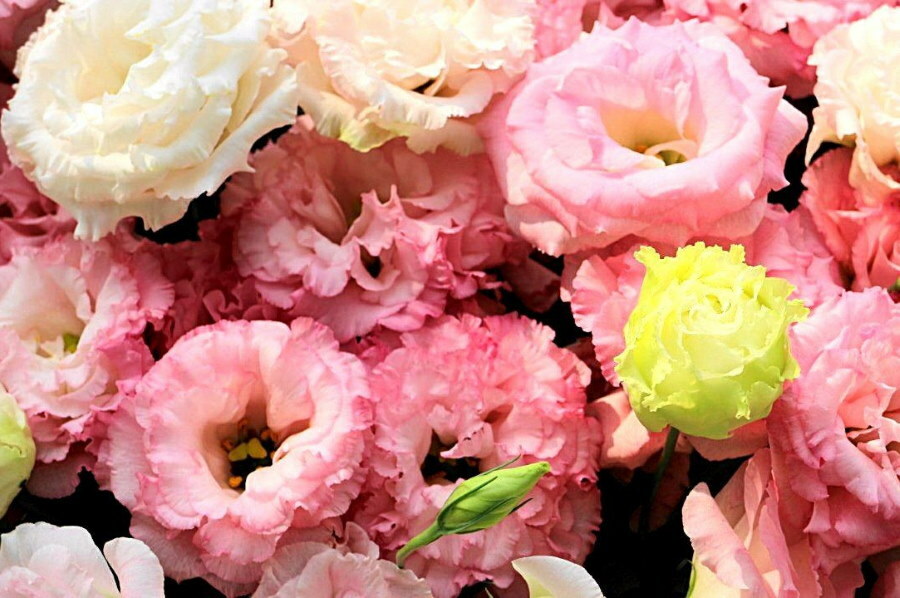
Eustoma "Aurora" with luxurious double flowers blooms much earlier than other varieties
The most common varieties include:
- Rosita, White, which will amaze with snow-white shades - cold and austere or soft and romantic;
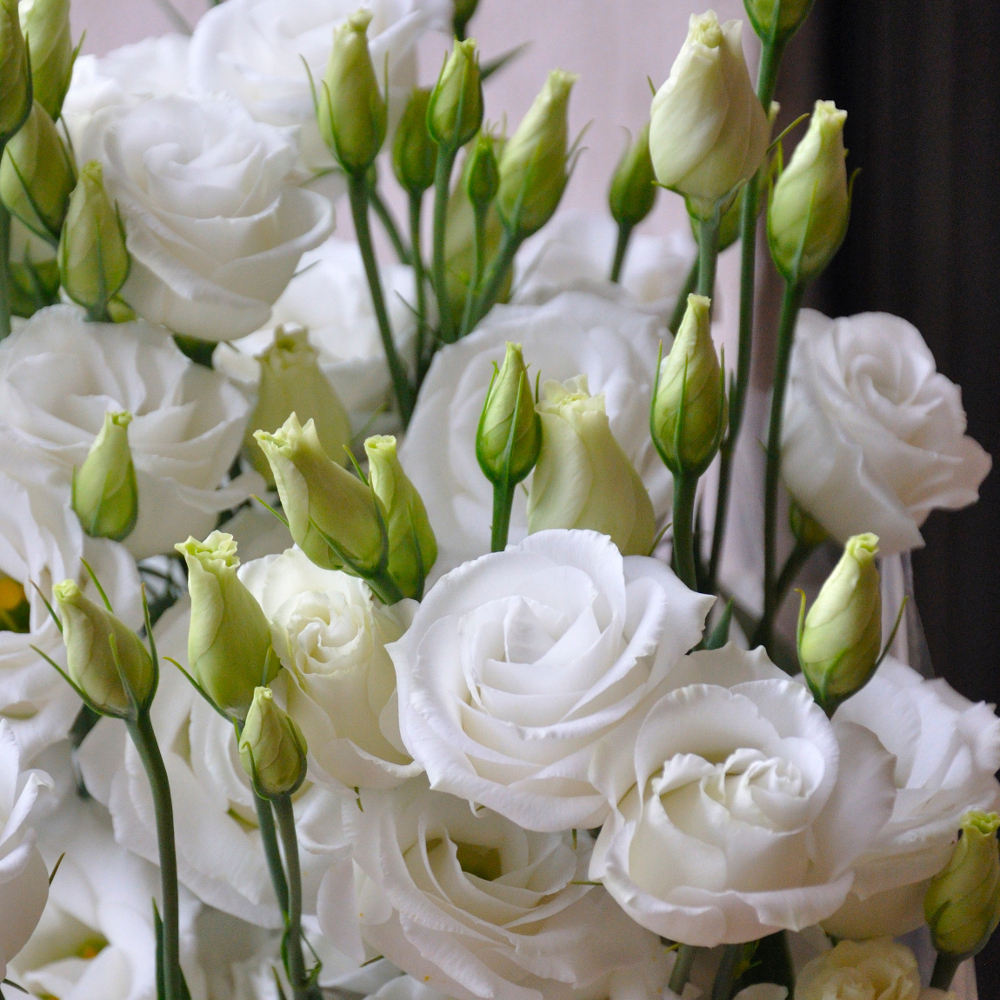
Eustoma Rosita with beautiful white flowers
- Lime, GreenGreen, striking with a touch of fresh summer greenery;
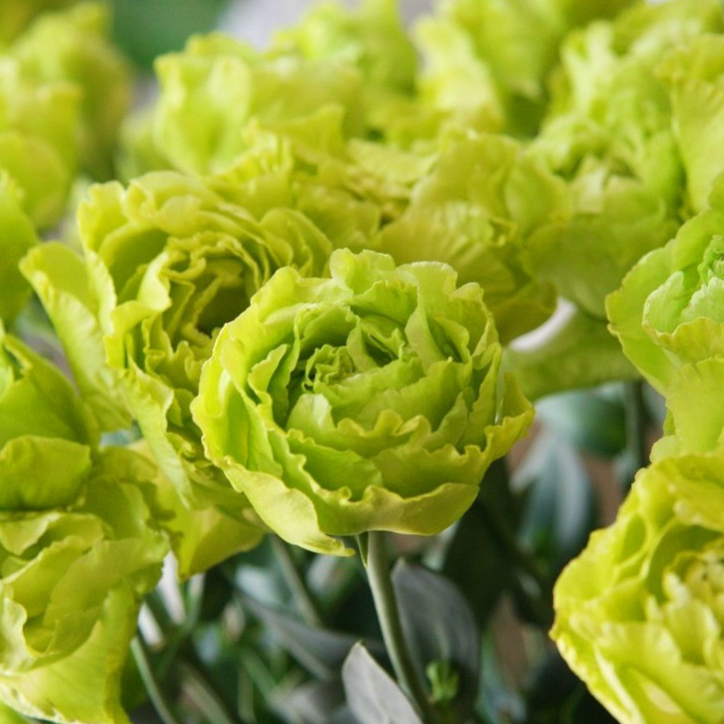
Lime variety with soft green terry buds
- Yellow from Super Magic - a real rich lemon shade;
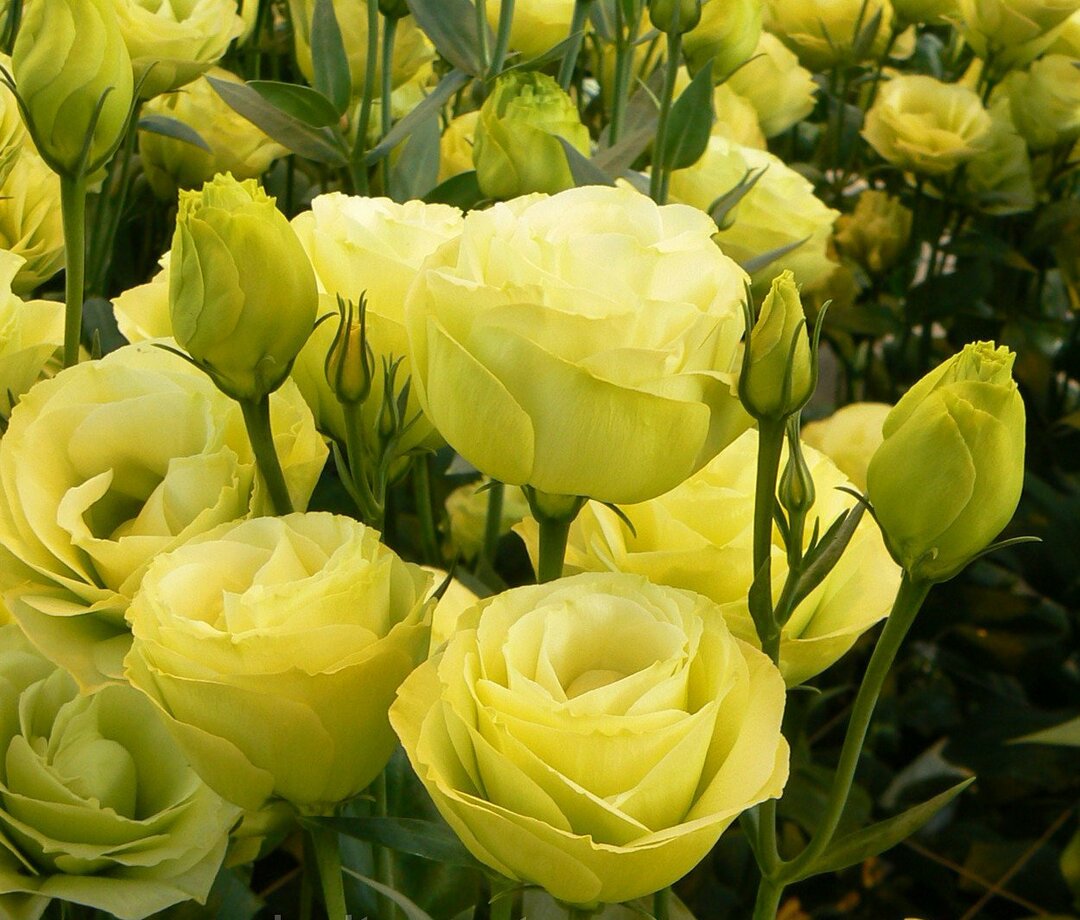
Yellow eustoma with lemon petals
- Misty Pink Mariachi, Deep Rose - pink color of all kinds of shades that looks cute and charismatic;
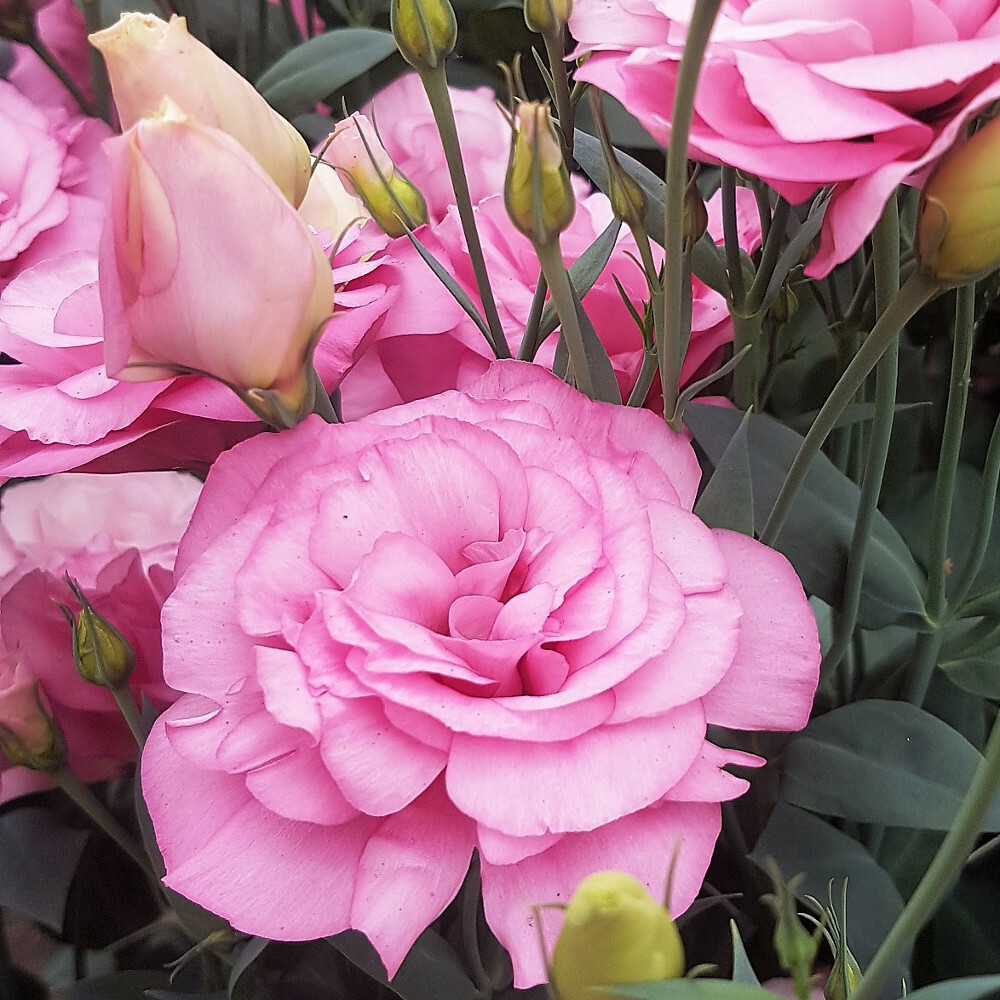
Large pink buds of Mariachi variety Misty Pink eustoma
- Blue Flash Milka, captivating with a deep blue shade. Among these flowers, you can even find those that you will like with a navi shade.
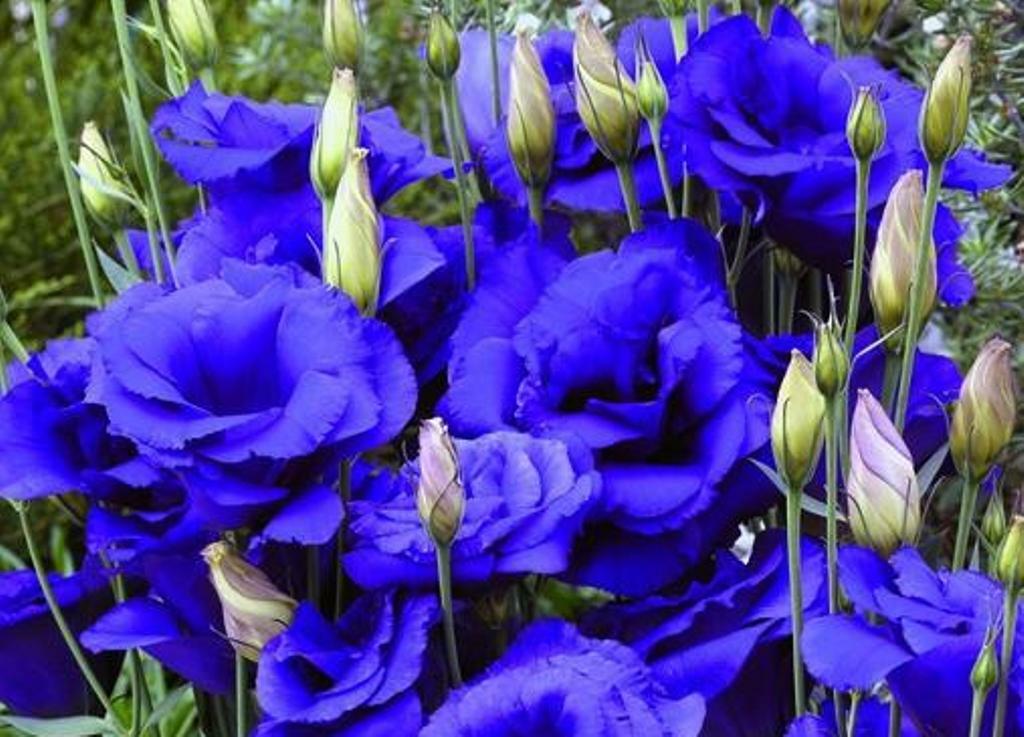
Blue flowers look very unusual
It remains to choose a flower to taste for a color - and decorate your own garden.
Planting and caring for cute bells
Considering the numerous eustomas and their photos of flowers in a flower bed, it seems that caring for such a delicate and charming flower is difficult and difficult. However, this is not so, because it is not for nothing that it is also called the “Texas bell”.
It is better to sow lisianthus in bowls on the windowsill in late February and early March, and not in open ground. The seeds are too small, so they can easily “get lost” and simply not emerge.
An important point is the moment of sowing. The soil should be loose, light and nutritious. The optimal ratio: black soil, humus and sand as 3: 2: 1. The soil must be sifted, poured into boxes or bowls, tamped a little. Since the seeds of bells are very small, it is better to sow dragee and in rows. The distance between the rows is 2-3 cm. This will make it possible for the seedlings to rise more amicably and then it will be easier to break through them for a dive.
The grown seedlings - up to 5-7 cm - are planted in separate cups with nutritious soil. And after the installation of warm weather - late April-early May - they are planted in open ground. The distance between flowers is determined by the selected variety.
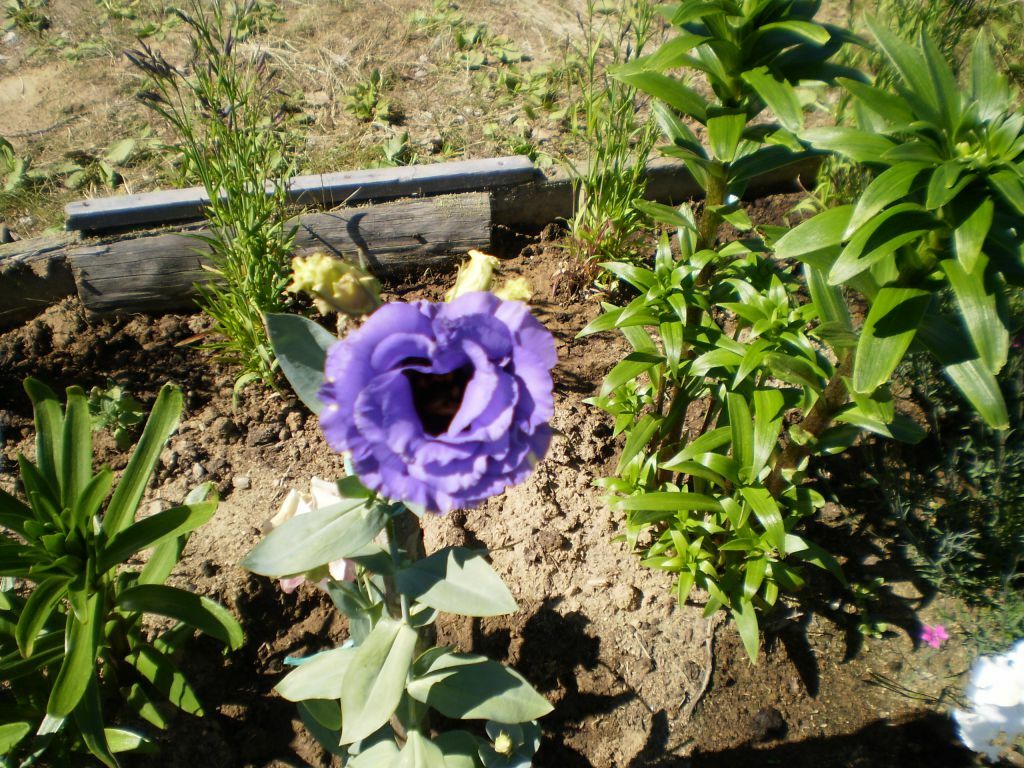
When planting seedlings, it is necessary to leave room for their normal development.
And then the eustoma in the design of your garden, according to the photo, continues to amaze, although caring for it is unpretentious. It is worth remembering about:
- Watering. It should be lean rather than moderate.
- Lighting. The flower tolerates partial shade, but in full shade its colors fade.
- Top dressing. Lisianthus, like petunia, love feeding, so complex minerals can be used 2 times every 1 month.
- Bush formation. For cutting, you need to cut flowers with a low stem, leaving a few as high as possible.
- Pests - slugs, whitefly, with which you can fight in different ways.
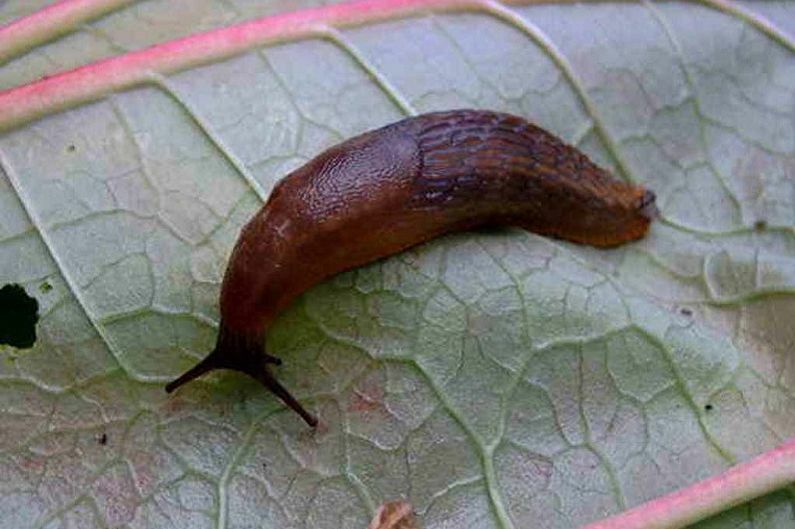
Pests rarely appear on eustoma. But if this still happened, the flowers need to be treated with suitable insecticides, for example, Aktara, Confidor or Fioverm
In order not to grow seedlings yourself, you can buy ready-made small plants in garden centers. If there is a craving for independent cultivation, then it is worth purchasing seeds from world producers. So you can be sure of the end result for sure.
Attention can be paid to TM Syngenta (Switzerland), Kitano (Japan), Pan American Seeds (USA), Trifolium (Denmark) and the like.
Realizing that it is easy to care for a flower, you can decorate your own landscape with it. You can start right now!
Photo of eustoma in a flowerbed: harmoniously selected flowers-neighbors and an interesting design
The beauty of the eustoma in the landscape design of the garden, as in the photo, is a true princess or a harmonious inclusion in the existing landscape. It goes well with many tall flowers, and will also look organically in an independent flower garden.
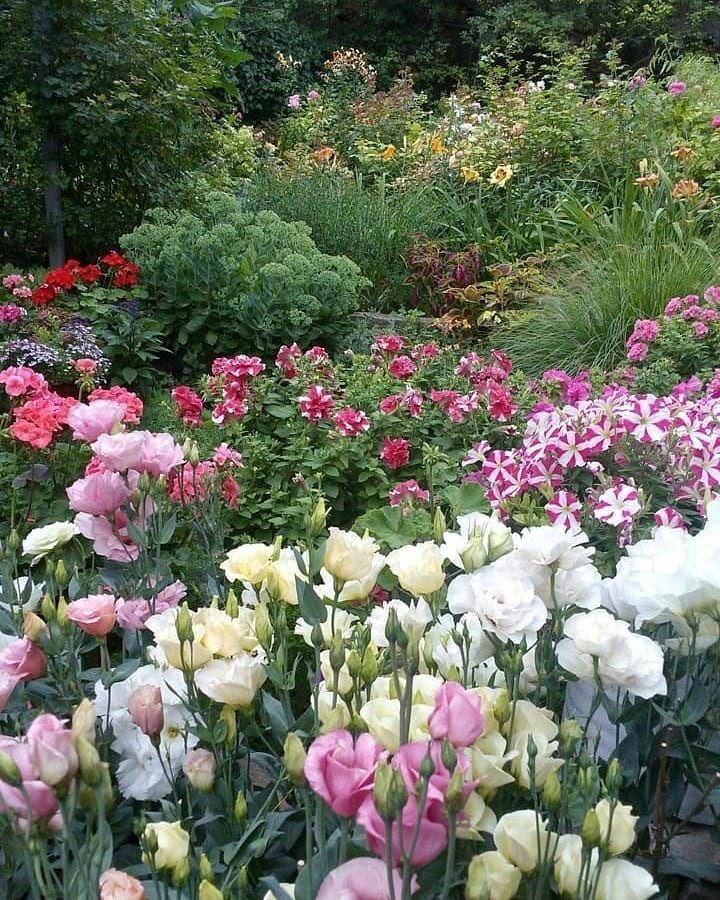
Eustoma will look good in a flower bed with peonies, petunias or carnations
In this case, the most suitable landscape styles for her are:
- Dutch, in which everything blooms and pleases the eye. Therefore, there is a place for both tall and undersized flowers.
- Chinese, in which everyone is of short stature, so undersized bells will come in handy.
- Moorish, which is characterized only by green shades, so a lisianthus bush of a certain variety will not be superfluous.
But these are not all possible styles. You can create a kind of fusion, the main thing is the desire to create on your own site and feel harmony.
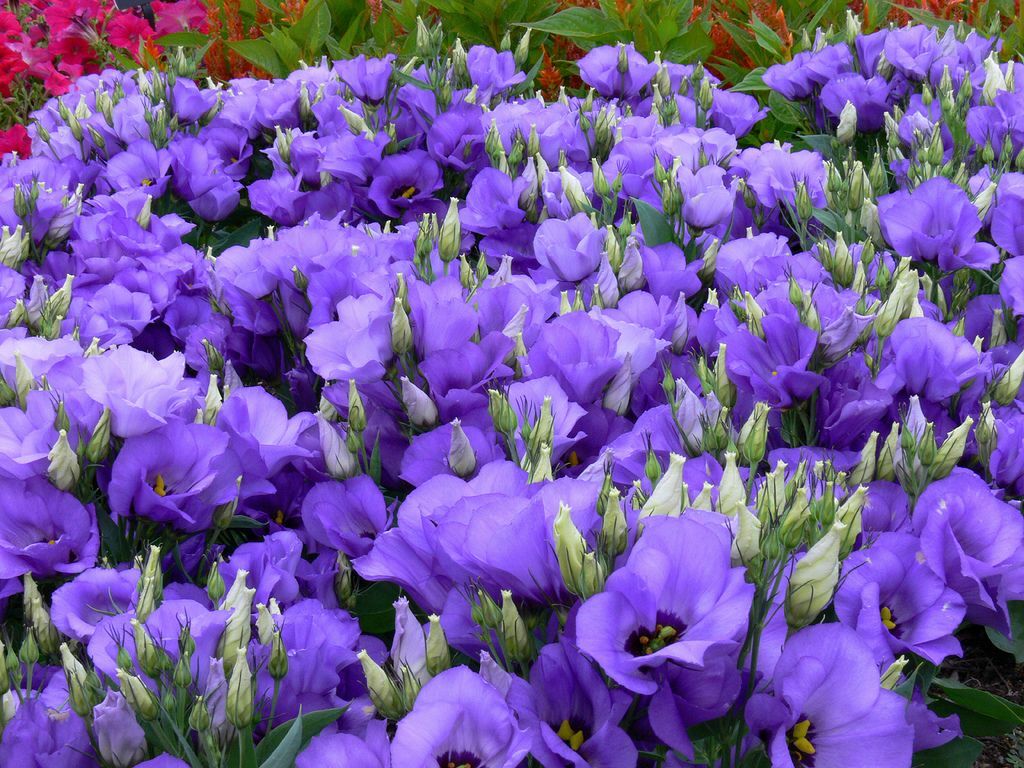
You can create a luxurious carpet from eustoma by planting several dozen plants together.
In this case, the neighbors of the eustoma can be:
- strict and tall gladioli, large-flowered chrysanthemums, dahlias;
- marshmallow flowers - garden roses, peonies, which will be located in the second tier;
- undersized ranunculus, black-shaved and tulips.
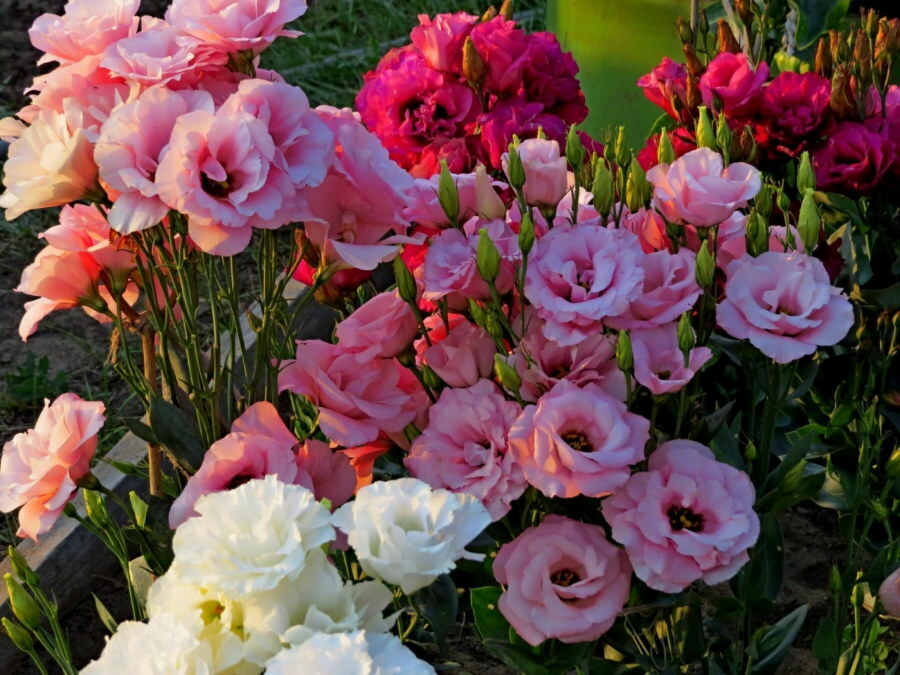
It takes a little work to grow eustoma, but the result will exceed all expectations.
In a word, the beauty of eustoma is good in any union and in any area. Drop her off once and you will fall in love with her forever!
Video: Everything about growing eustoma in your garden
Photo of beautiful eustoma flowers




